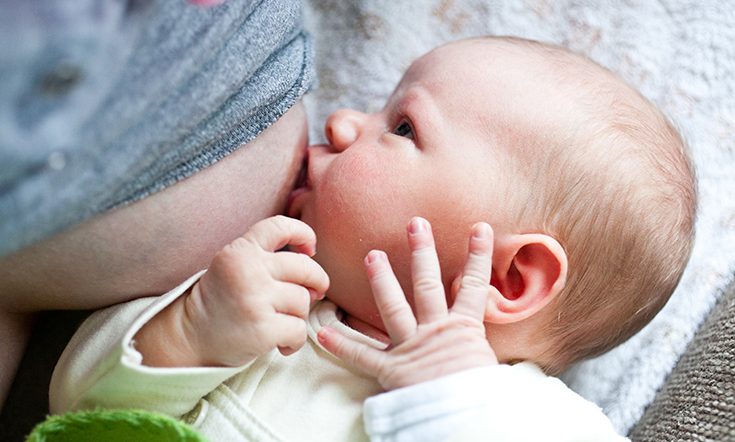

Breast refusal can happen when the baby finds it difficult to latch on to the breast properly because he’s previously had a traditional bottle to feed from or a pacifier (dummy) to suck on.
The reason for this is that for your baby, feeding from a bottle and sucking on a dummy is a different technique than feeding from the breast. Babies use different facial muscles for these different types of sucking – bottle teats are somehow more rigid, with a constant flow of milk – so with bottle feeding, your baby doesn’t have to work as hard to get the milk. It’s easier for them, so this can become their preference.
For some babies, this can lead to breastfeeding problems when they are placed back on the breast, because they learn different feeding behaviour drinking from the traditional bottle than from the breast.
In order to get milk from the breast, babies must coordinate the movements of their tongue and jaws in a sucking motion that’s unique to breastfeeding. The baby does not need to do this with a bottle – it’s easier to get the milk that they want – so babies get used to not having to “work” for the milk and it creates a new behaviour pattern that can lead to less effective breastfeeding sessions.
This can create a cycle where the baby gets less milk and the mother’s body creates less supply.
Things you can try to help get baby back on the breast:
- Try pumping to get your milk supply going before you put the baby to the breast – this will help your baby not have to work so hard to get a good flow of breastmilk going
- During breastfeeding sessions and for prolonged periods of time in the day, try skin-to-skin contact – this helps the baby feel calm and reminds the baby to prefer the gentle touch of her mother.
- Try bathing with your baby and allowing baby to find their way onto the breast to have a feed. (Only do this if you have someone who can supervise and help you both get in and out of the bath). This is a wonderful method which switches baby back into the “just been born” instincts and can help re-start breastfeeding. You may have to have a daily bath for a few days before baby suddenly just latches back on the breast.
- Try using a nipple shield to make baby think they are still latching onto the “plastic” feeling of a bottle, but actually they are latching onto your breast.
- Seek help sooner rather than later from a lactation consultant or at your local maternal and child health clinic or breastfeeding drop-in.
- Maintain your milk supply by expressing at least 8 times every 24 hours, ensuring one expression is between 12am-5am.























